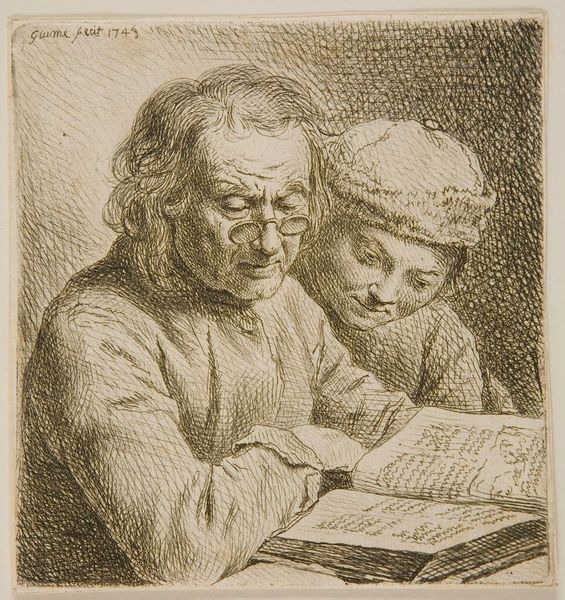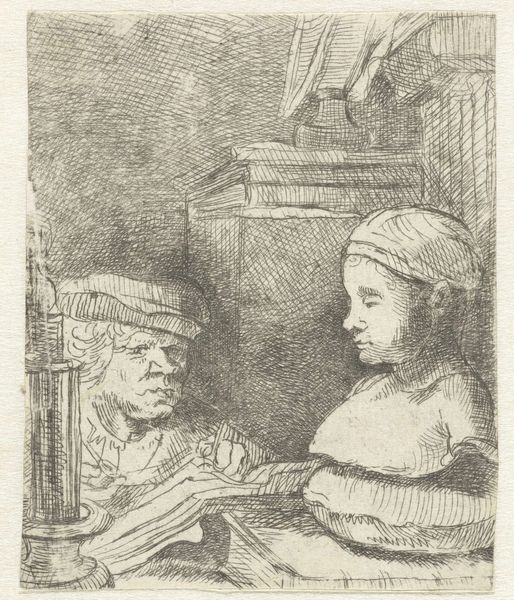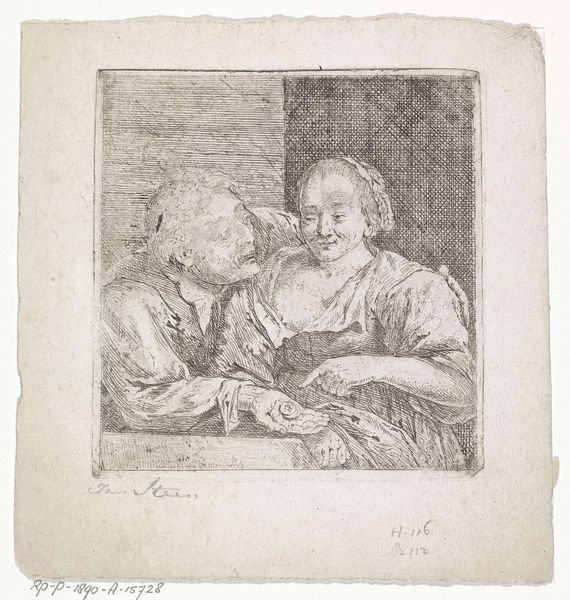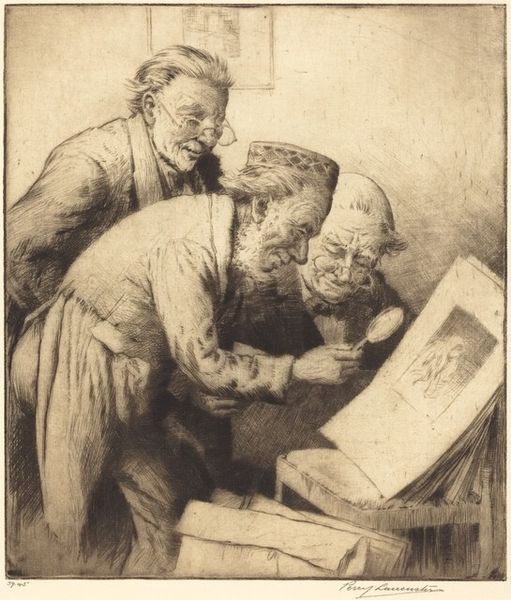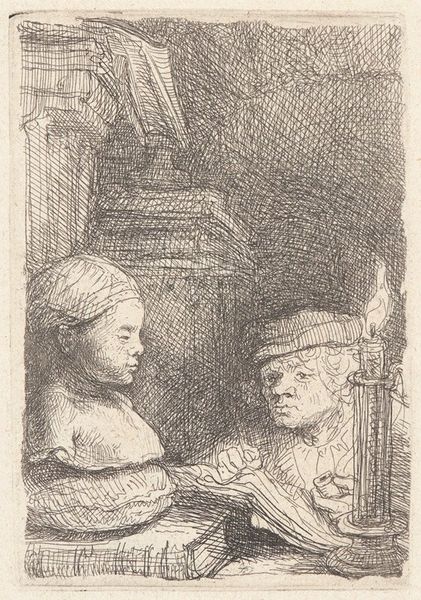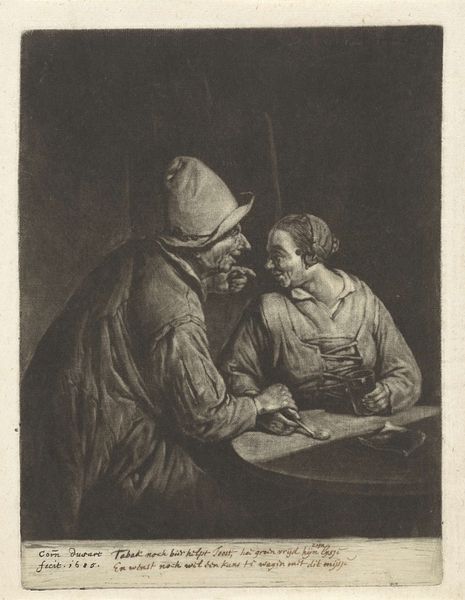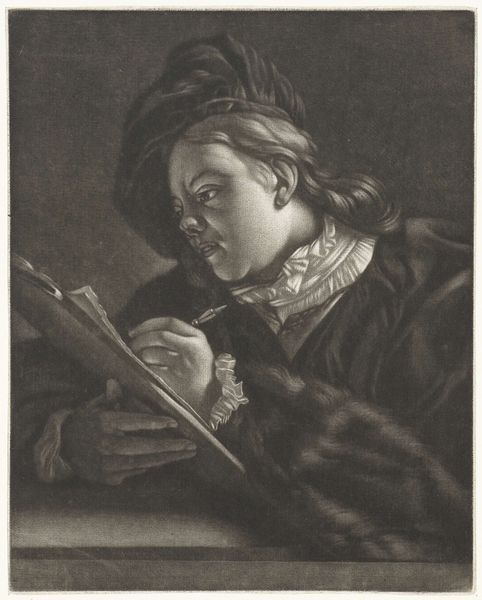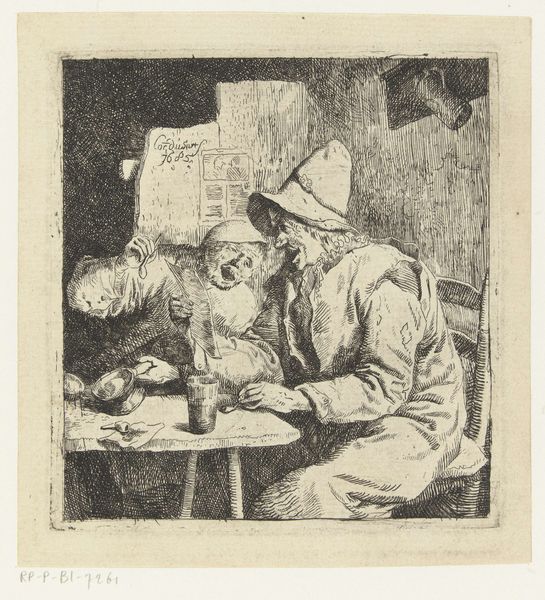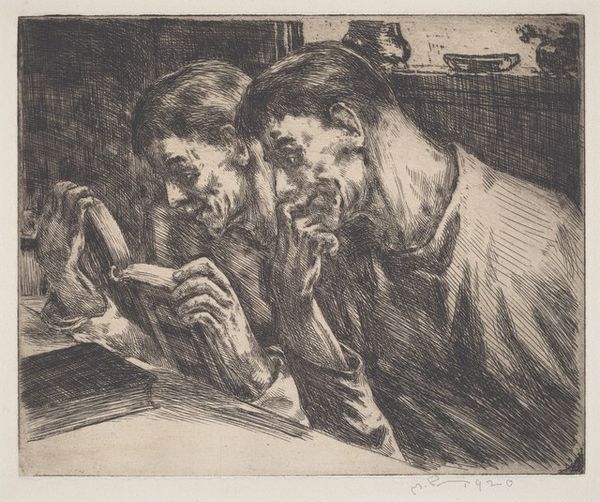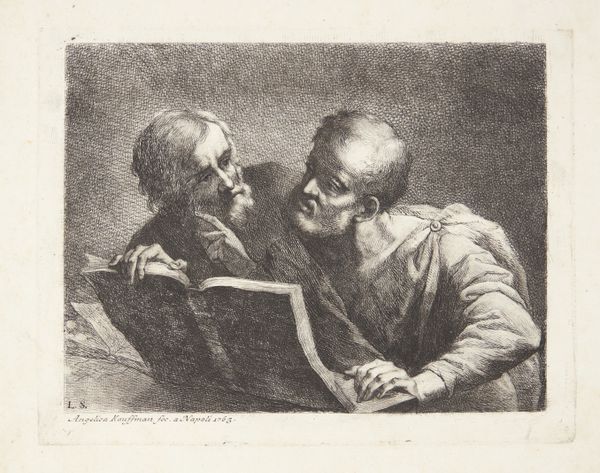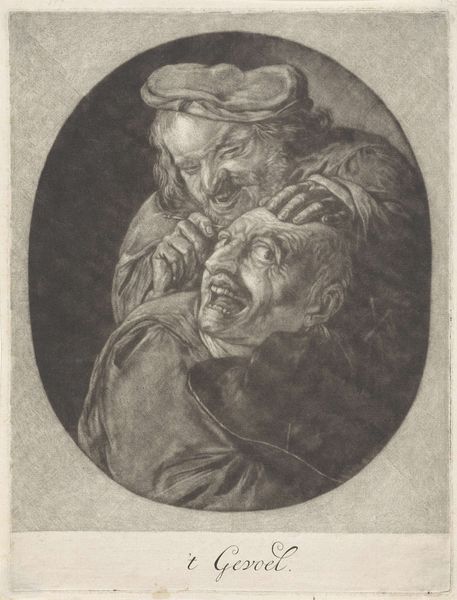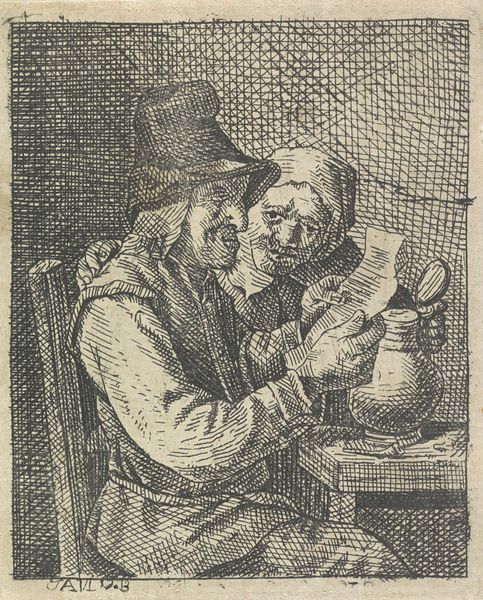
drawing, print, engraving
#
portrait
#
drawing
#
facial expression drawing
#
baroque
# print
#
book
#
old engraving style
#
portrait reference
#
pencil drawing
#
portrait drawing
#
genre-painting
#
engraving
Dimensions: height 124 mm, width 115 mm
Copyright: Rijks Museum: Open Domain
Curator: This engraving by Johann Gottlieb Glume, titled "Man en jongen lezen in een boek," which translates to "Man and boy reading a book," dates back to 1749. Editor: The most immediate thing is how textured it is. Look at the varying densities of line! It almost feels tactile, like I could reach out and feel the coarse paper of that enormous book. Curator: Absolutely. It’s intriguing how Glume employs the etching and engraving techniques to conjure a scene brimming with subtle complexities, creating depth, modeling forms and hinting at the prevailing symbolic connotations of learning and generational transference of knowledge. Notice the interlocked gazes as they bend over this shared artifact. Editor: Speaking of the artifact, the means by which books were produced in 1749 – the labour! From paper-making and typesetting to printing, binding… Each one of those pages represents hours upon hours of concentrated effort. You don't just stumble upon readily-available knowledge. Curator: Indeed. And books weren't always considered universally valuable; they symbolized power and authority. Consider the implied message of literacy versus illiteracy in this period, or the dynamic between youth and age... The engraving implies far more than just a man reading with a boy. It carries layers of pedagogical and societal implications that continue to resonate. Editor: I hadn’t thought about it like that. When you factor in the production and materials…paper, ink…plus labor conditions within guilds at the time, there's also a silent discourse about privilege embedded in the image. These materials speak as loudly as their faces. Curator: Exactly. I wonder too, whether the choice of Baroque styling influences our reading. There's an intimacy, achieved in contrast to dramatic renderings of wealth or mythology that Baroque pieces might carry, here translated into an interest in common domestic life and relationships. Editor: That domestic reading, though, becomes weighted again. The cost of the paper, plus skilled hands… that’s access. What could this piece communicate about divisions during that era when considering who can, and who cannot, hold a book? Curator: Such layered meanings arising from a seemingly simple depiction—Johann Gottlieb Glume's engraving truly provides food for thought on so many levels. Editor: Absolutely. Examining the material underpinnings really enriches the way we engage with it on a symbolic level.
Comments
No comments
Be the first to comment and join the conversation on the ultimate creative platform.
